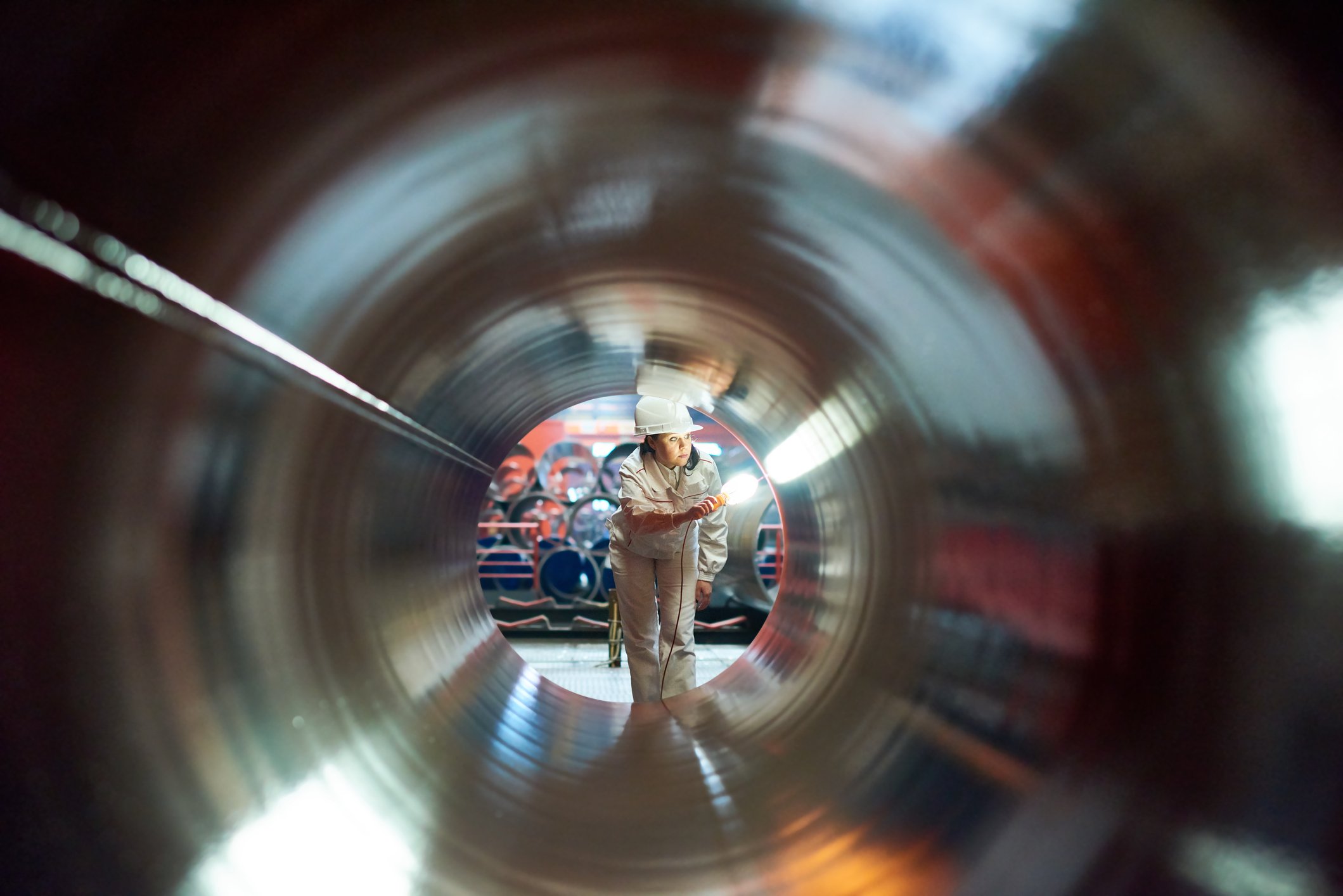Williams Companies (WMB 0.44%) has undergone a remarkable transformation over the past few years. The natural gas pipeline giant has sold non-core assets, rolled up its master limited partnership, and invested in high-return expansion projects to improve its financial position, simplify its corporate structure, and grow cash flow. These initiatives started paying dividends in 2018, which was evident in the company's recent fourth-quarter report.
However, Williams' CEO, Alan Armstrong, sees even better days ahead. He noted four reasons for that belief on the conference call accompanying those results.
Check out all our earnings call transcripts.

Image source: Getty Images.
1. We delivered high-end results in 2018 despite the impact of asset sales
Armstrong stated on the call that Williams' portfolio "performed even better than expected this past year as we once again came in at the top of our guidance ranges for key financial metrics." He pointed out that "we achieved an all-time record for adjusted EBITDA in 2018 even in the face of asset sales totaling more than $4.6 billion over the past two and a half years." Those transactions helped reduce Williams' direct exposure to commodity prices, improve its leverage ratio, and fund expansion projects so that the company didn't have to dilute investors by issuing more equity.
One factor fueling Williams' high-end results last year was that the company set delivery records on its key Transco pipeline. Further, Armstrong noted that the "Northwest Pipeline also hit an all-time record for annual throughput, eclipsing the prior record by 5%." Those strong results, when combined with a boost from recently completed expansion projects, helped Williams offset the impact of $1.3 billion in asset sales it completed last year that it didn't anticipate in its budget.
2. Our financial profile continues to improve
The high-end earnings, when combined with the cash proceeds from asset sales, enabled Williams to more quickly improve its balance sheet. Armstrong noted on the call that, "with respect to leverage you can see a nice outperformance with year-end leverage at 4.8 times," which was below its 5.0 guidance. The company also exceeded expectations for dividend coverage, which averaged 1.69 for the year versus a forecast of 1.6. That led Armstrong to state "it was another year where we delivered on expectations, including steady, predictable and growing cash flows, while improving the balance sheet."
3. We have plenty more growth coming down the pipeline
Last year was a heavy investment year for Williams as it placed several critical Transco expansions online, including the large Atlantic Sunrise project. However, Armstrong noted that the company has ample growth still ahead. He pointed out that, "we continue to make progress advancing the extensive next generation of Transco, fully contracted projects like Southeastern Trail, Rivervale South to Market, Leidy South, Northeast Supply Enhancement, Gateway and several other Transco projects that we've not gone public with yet." Further, he noted that "late in the year, we saw the beginnings of the accelerated Northeast G&P growth that we expect to continue for many years to come as the takeaway cloud finally has begun to lift off this basin." In the company's view, its Northeast G&P volumes will expand at a 15% compound annual growth rate through 2021.
In discussing growth, Armstrong stated that Williams "continued to exercise capital discipline" by "passing up many opportunities" that didn't meet its return hurdles. However, the company did pounce when the right investments came along, "like our entry into the DJ Basin" stated Armstrong. Williams also recently partnered with fellow midstream company Targa Resources (TRGP 0.57%) to connect rising natural gas liquids (NGL) volumes from the Rockies to Targa's processing complex in Texas. As part of this strategic partnership, Williams will invest $300 million-$400 million to build the Bluestem Pipeline that will connect its NGL operations in the west to Targa's Grand Prix pipeline that's currently under construction. Projects like that one should enable Williams to continue growing earnings in the future.

Image source: Getty Images.
4. We're on track to achieve our guidance for 2019
Williams' efforts in 2018 have the company well positioned for the coming year. Armstrong noted that the company is "reaffirming our 2019 financial guidance with the exception of growth capital expenditures," which are rising mainly because it shifted some spending from 2018 to this year. That reaffirmation is worth noting, since "much has changed since we originally issued 2019 guidance last May," stated Armstrong. He noted that "we sold our large-scale Four Corners system and entered into the DJ Basin, where the system there that we now operate was still in the early stages of its continuing expansion and development." The CEO further pointed out that "our producing customers of course saw a 28% decrease in crude and NGL prices from August until year-end," which is causing several to slow drilling activities that will impact volumes on some of the company's system.
Williams will be able to overcome those headwinds with the "stability and predictability of our natural gas infrastructure focused strategy," stated Armstrong. With long-term fee-based contracts backing the bulk of its network, the company doesn't feel as much impact from commodity price volatility as it used to, which is why it expects to remain on track to achieve its forecast.
Optimism continues building
Williams Companies' strategic transformation is starting to pay dividends. The company was able to deliver high-end results in 2018 despite the impact of asset sales and renewed volatility in the oil market. That has the company set up for success in 2019 and beyond, making it an ideal stock to consider holding for the long haul.







